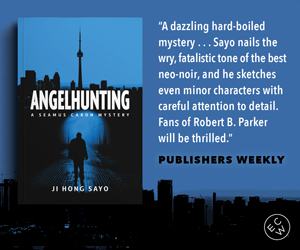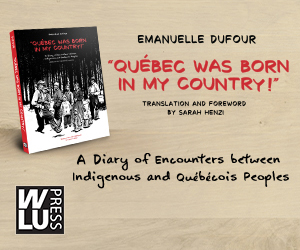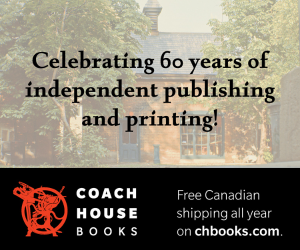The Rule of Three
By Suzanne Methot
I read somewhere once that a writer will always write three versions of their book: one for themselves, one for the professional reader, and one for the public reader. Knowing this has changed my life as a creative person. The work of writing – and writing new drafts – is now a much more streamlined process.
The first version of any book is the one that’s for the writer. When I wrote my 2019 book Legacy: Trauma, Story, and Indigenous Healing, the first version was pretty awful. I couldn’t get any grants (I applied twice and was denied) and I was drowning in research. I knew the book was important and necessary, but I clearly wasn’t making the subject relevant to other people. Then a young colleague of mine died. I wrote an entirely new introduction to the book on the day I heard the news, and that intro became the sample material I used in my third grant application, which was successful. The difference between my first grant application and my third was that I had taken the subject of intergenerational trauma out of the abstract, out of research, and located it in a story.
The improved introduction was great – but the rest of the manuscript was still awful. As I was writing, I kept seeing how my own childhood, workplace, and relationship experiences played into the research. There were lots of Ding ding ding! Oh! So that’s what was going on! moments, but although those moments were significant to me, they weren’t really of interest to anyone else, at least not the way I was writing them. I was still really angry when I wrote the first version of the book, because I had just been pushed out of my job by a stunning act of lateral violence – and guess what? No one wants to read that. Being angry at something that has happened and is still happening is not a story, and it’s certainly not a book.
The second version of any book is the one that’s for the professional reader. After I realized that my anger and my a-ha moments were of no interest to anyone else, I went back to the research and wrote draft number two. This was the version that I sent to my agent. When she read it, she called me and said, “This is great, but it’s a bit academic. Where are you in this story?” I had taken out too much. It was dry and it needed some humanity.
The third version of any book is the one that’s for the public reader. After the conversation with my agent, I made a new mind map. I took out lots of text, I added new chapters and themes, and I connected all the research to actual humans I had known, worked with, or had seen portrayed in the media. There was an overall story of a little girl who had experienced childhood trauma to become a community worker, teacher, and writer (that would be me) and many other stories of people and communities who were dealing with, and healing from, intergenerational trauma. Finding the stories helped me get the right tone. By including pieces of my own story and the stories of my parents, I realized that I didn’t deserve what happened to me – and that they didn’t deserve what happened to them, either. I could see them as wounded children. That insight allowed me to be compassionate to the community members who had so recently harmed me. This is the version that my agent sold to my publisher.
After the editor for the press did her read, I knew there would be rewrites. Having another set of eyes looking at the possibilities for story, for marketing, and for audience means making changes. This is when I learned that version one of a book can sometimes linger even when we’re deep into version two.
We were done all the changes and all the rewrites when I got back a final note on chapter four, which was about lateral violence. The editor said it was “fraught.” I read the chapter again, dozens of times, but I couldn’t see what she was referring to – so I sent the chapter to a colleague whose perspectives I value. We’d worked together as program staff (me) and administrator (her) in a residential facility for Indigenous women and women-led families. She read the chapter in a day and then told me that it was fraught because the entire chapter was me saying “Please see me. See how I was wronged? See how this institution, and these people, failed me?” She said I was drawing the reader away from the issues and into my life. What I thought was version three of this chapter was still actually version two. It wasn’t ready for the public reader yet.
Writing should never be about settling a score. Non-fiction is true, but it still has to be crafted. The craft is to write a story – and that means the author needs to have some distance from both the research and their own unresolved emotions. The professional reader helps create that distance.
To tell the story of lateral violence properly, I had to think of myself as a character in the book – and that meant seeing myself as part of the dynamic. Instead of slogging through the details of how I had been wronged (which is boring and not completely honest), I rewrote chapter four so that readers could see my reactions and responses to what I had experienced. The chapter then became an overall picture of people and institutions that told a larger story about society. That was the last step toward making the third, and final, version of the book.
I now use the Rule of Three with every book I write. The first version is always for me, and in that version, it’s okay to be emotional and have too much research. Then I take a step back, look at where I am inside the story, and that’s the second draft for the professional reader. Then we – agent/trusted reader and publisher – work together to make it into version three, which resonates with the reader.
Your CanLit News
Subscribe to Open Book’s newsletter to get local book events, literary content, writing tips, and more in your inbox
Photo by Patrick Fore on Unsplash
The views expressed in the Writer-in-Residence blogs are those held by the authors and do not necessarily reflect the views of Open Book.
Suzanne Methot is the author of Legacy: Trauma, Story, and Indigenous Healing. She has worked in adult literacy and skills-training, as a museum educator, and as a teacher, creating a classroom program for Indigenous students experiencing intergenerational trauma. Born in Vancouver and raised in Peace River, Alberta, Suzanne is Nehiyaw of mixed Indigenous and European heritage. She lives on Gabriola Island, B.C., on the unceded territory of the Snuneymuxw Nation.


